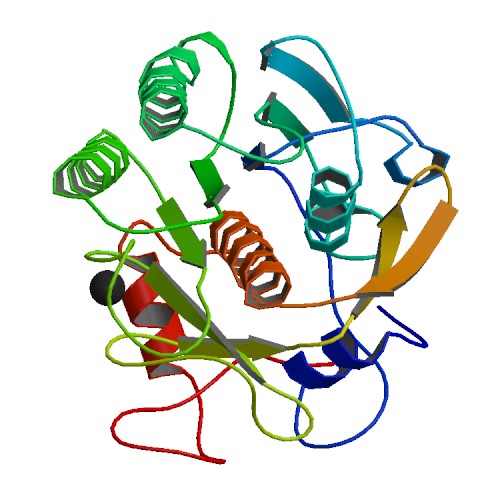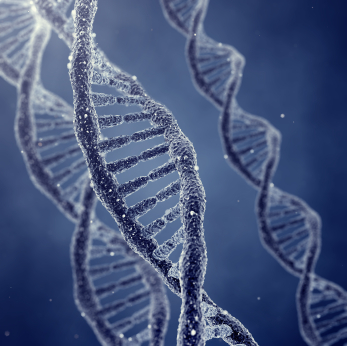
Image courtesy of the British Museum
In the late 1800s, Victorian England was mesmerized and horrified by a series of brutal killings in the crowded and impoverished Whitechapel district. The serial killer, who became known as “Jack the Ripper”, had murdered and mutilated at least five women, many of whom worked as prostitutes in the slums around London. None of these murders were ever solved, and Jack the Ripper was never identified, although investigators interviewed more than 2,000 people and named more than 100 suspects. Now, 126 years after the murders, a British author, who coincidentally has just published a book on the subject, is claiming that DNA analysis has revealed the identity of the notorious killer. DNA is often thought to be the “gold standard” of human identification techniques, so why is there so much skepticism surrounding this identification?
Continue reading “DNA Reveals the Identity of Jack the Ripper?”
dna
Ancient Origins of a Human Gene Associated with Diabetes
 Recently, researchers of the SIGMA Type 2 Diabetes Consortium published a paper in Nature identifying a new locus associated with a higher risk of type 2 diabetes (1). Considering the increasing prevalence of this metabolic disease in today’s sugar-filled world, any discovery that helps us understand diabetes is exciting news. However, the most interesting discovery published in this paper might not be this new gene variant but rather the origin of this variant in modern human populations: Neandertals.
Recently, researchers of the SIGMA Type 2 Diabetes Consortium published a paper in Nature identifying a new locus associated with a higher risk of type 2 diabetes (1). Considering the increasing prevalence of this metabolic disease in today’s sugar-filled world, any discovery that helps us understand diabetes is exciting news. However, the most interesting discovery published in this paper might not be this new gene variant but rather the origin of this variant in modern human populations: Neandertals.
Continue reading “Ancient Origins of a Human Gene Associated with Diabetes”
ProK: An Old ‘Pro’ That is Still In The Game

If you enter any molecular lab asking to borrow some Proteinase K, lab members are likely to answer: “I know we have it. Let me see where it is”. Sometimes the enzyme will be found to have expired. The lab may also have struggled with power outages or freezer malfunctions in the past. But the lab still decides to keep the enzyme. One may rightly ask – why do labs hang on to Proteinase K even when it has been stored under sub-standard conditions?
Continue reading “ProK: An Old ‘Pro’ That is Still In The Game”Sonnets in DNA
 For sixty years now, scientists have studied the role of DNA as a vehicle for the storage and transmission of genetic information from generation to generation. We have marveled at the capacity of DNA to store all the information required to describe a human being using only a 4-letter code, and to pack that information into a space the size of the nucleus of a single cell. A letter published last week in Nature exploits this phenomenal storage capacity of DNA to archive a quite different kind of information. Forget CDs, hard drives and chips, the sum of human knowledge can now be stored in synthetic DNA strands. The Nature letter, authored by scientists from the European Bioinformatics Institute in Cambridge, UK, and Agilent Technologies in California, describes a proof-of-concept experiment where synthetic DNA was used to encode Shakespeare’s Sonnets, Martin Luther King’s “I Have a Dream” speech, a picture of the Bioinformatics Institute, and the original Crick and Watson paper on the double-helical nature of DNA. Continue reading “Sonnets in DNA”
For sixty years now, scientists have studied the role of DNA as a vehicle for the storage and transmission of genetic information from generation to generation. We have marveled at the capacity of DNA to store all the information required to describe a human being using only a 4-letter code, and to pack that information into a space the size of the nucleus of a single cell. A letter published last week in Nature exploits this phenomenal storage capacity of DNA to archive a quite different kind of information. Forget CDs, hard drives and chips, the sum of human knowledge can now be stored in synthetic DNA strands. The Nature letter, authored by scientists from the European Bioinformatics Institute in Cambridge, UK, and Agilent Technologies in California, describes a proof-of-concept experiment where synthetic DNA was used to encode Shakespeare’s Sonnets, Martin Luther King’s “I Have a Dream” speech, a picture of the Bioinformatics Institute, and the original Crick and Watson paper on the double-helical nature of DNA. Continue reading “Sonnets in DNA”
Identifying the Victims of John Wayne Gacy
John Wayne Gacy was a notorious serial killer who sexually assaulted and murdered 33 boys and young men in the 1970s in Chicago, Illinois. The killing spree stopped only when he was arrested in 1978 after the parents of his last victim contacted police with critical information that implicated Gacy in the boy’s disappearance. He was tried, convicted and in 1994 executed for his crimes. Of the 33 victims that police found buried in and around his home, only 25 could be identified, leaving eight victims nameless and eight families to wonder if their missing loved one died at the hands of this evil man. When all available means of identification were exhausted, these eight sets of remains were buried but not forgotten.
In 2011, these remains were exhumed and the victim’s DNA analyzed to try to provide clues as to their identity.
Continue reading “Identifying the Victims of John Wayne Gacy”How Identical are Identical Twins?
 Identical twins are derived from the same fertilized ovum and, therefore, should be…well… identical, right? They look the same and often dress the same, especially as children, and many people often have a hard time distinguishing one twin from the other. They are indistinguishable by genetic testing.
Identical twins are derived from the same fertilized ovum and, therefore, should be…well… identical, right? They look the same and often dress the same, especially as children, and many people often have a hard time distinguishing one twin from the other. They are indistinguishable by genetic testing.
However, identical twins are not always identical, as the authors of a recent letter to the editor of Forensic Science International Genetics point out (1). Continue reading “How Identical are Identical Twins?”
Analyzing DNA to Determine a Person’s Age
 People have employed many methods to disguise their age: eating a healthy diet rich in antioxidants, exercising regularly, protecting their skin from the sun and, if all else fails, undergoing plastic surgery. However, a recent Current Biology paper may make it harder for us to hide our true age. The authors describe a real-time PCR assay that can provide an estimate of a person’s age based on a tiny blood sample (1). Continue reading “Analyzing DNA to Determine a Person’s Age”
People have employed many methods to disguise their age: eating a healthy diet rich in antioxidants, exercising regularly, protecting their skin from the sun and, if all else fails, undergoing plastic surgery. However, a recent Current Biology paper may make it harder for us to hide our true age. The authors describe a real-time PCR assay that can provide an estimate of a person’s age based on a tiny blood sample (1). Continue reading “Analyzing DNA to Determine a Person’s Age”
The Ongoing Legacy of the Human Genome Sequence

When the first draft sequence of the human genome was announced, I was a research assistant for a lab that was part of the Genome Center of Wisconsin where I created shotgun libraries of bacterial genomes for sequencing. Of course, the local news organizations were all abuzz with the news and sought opinions on what this meant for the future, including that of the lab’s PI and oddly enough, my own. While I do not recall the exact words I offered on camera, I believe they were something along the lines of this is only the first step toward the future of human genetics. Ten years later, we have not fulfilled the potential of the grandiose words used to report the first draft sequence but have gained enough knowledge of what our genome holds to only intrigue scientists even more.
Continue reading “The Ongoing Legacy of the Human Genome Sequence”

